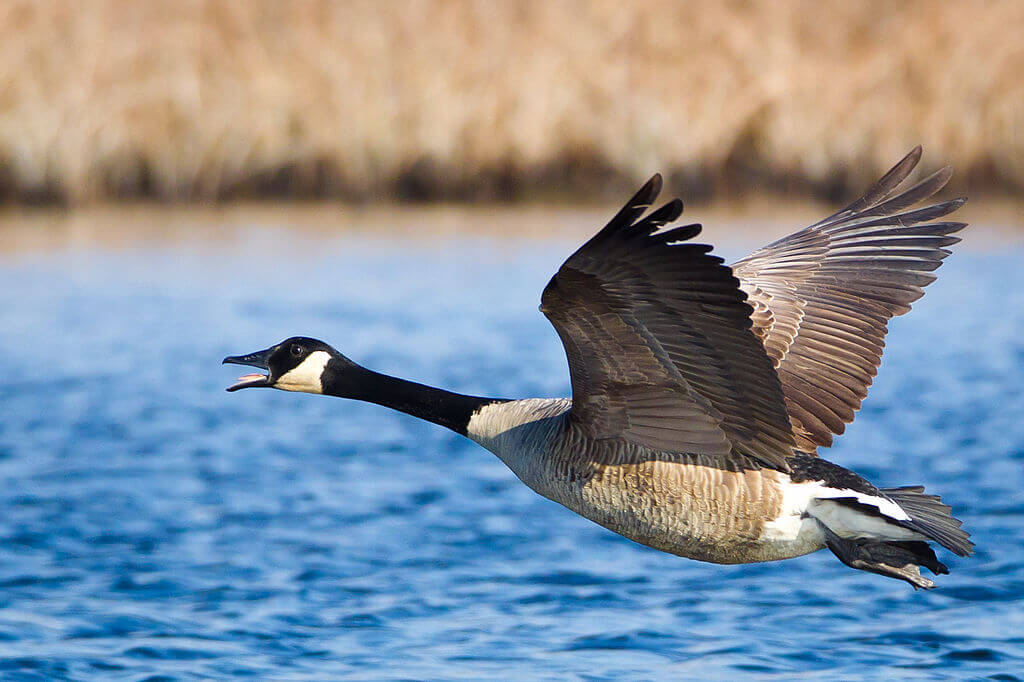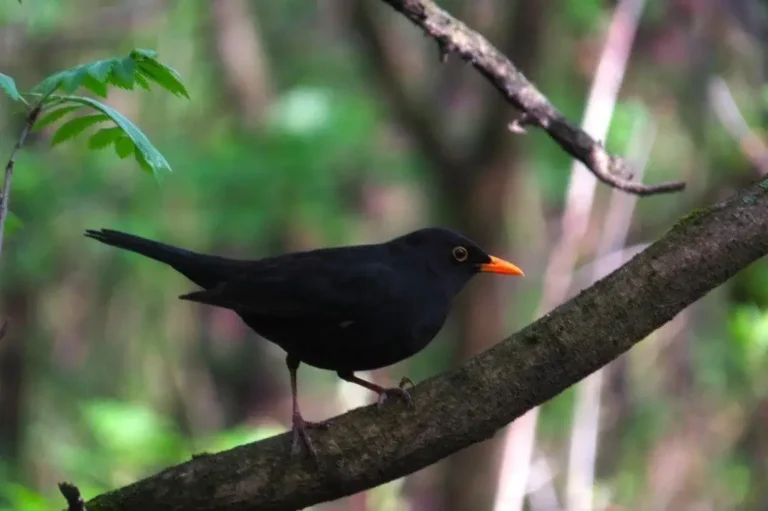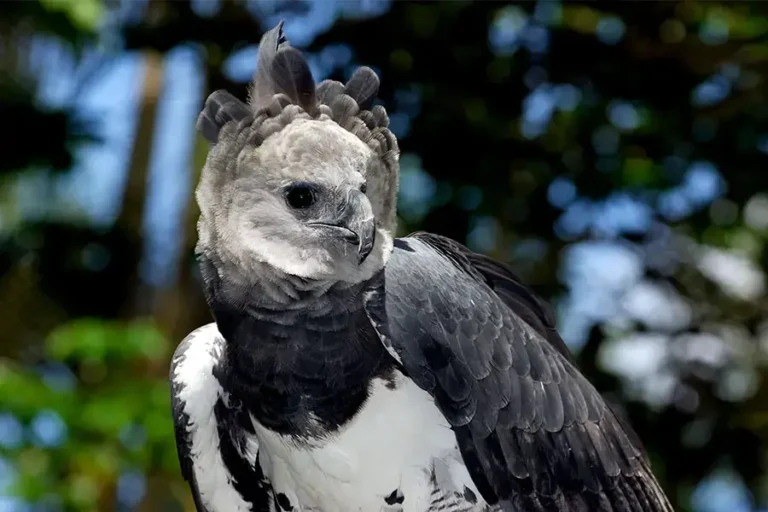Canada Goose (Branta canadensis) | A Comprehensive Guide
The Canada Goose (Branta canadensis) is one of the most recognizable and widespread birds in North America. Known for their striking black and white facial markings and their distinctive V-shaped flight formations, these birds have a significant presence in both rural and urban landscapes. Canada Geese have long captured the attention of bird enthusiasts and environmentalists due to their adaptability, migratory patterns, and close relationship with humans.
Contents
Scientific Classification
- Kingdom: Animalia
- Phylum: Chordata
- Class: Aves
- Order: Anseriformes
- Family: Anatidae
- Genus: Branta
- Species: B. canadensis
The Canada Goose belongs to the genus Branta, which includes other black geese. Their scientific name, Branta canadensis, indicates their strong association with the northern regions of North America.
Physical Characteristics

Canada Geese are large birds, easily recognized by their long necks, broad wings, and distinctive black head with a white chinstrap. Their physical traits can vary slightly depending on subspecies, but the general characteristics remain consistent.
- Size: Adults range from 30 to 43 inches in length, with a wingspan of 50 to 75 inches.
- Weight: They typically weigh between 6 to 20 pounds, with males being slightly larger than females.
- Plumage: They have a brownish-grey body with a white underbelly and a black neck and head.
- Lifespan: In the wild, they can live up to 10–25 years, depending on environmental conditions and predation.
Habitat
Canada Geese are incredibly adaptable and can be found across a wide range of habitats. They thrive in wetlands, lakes, ponds, rivers, and marshes but are also commonly found in urban parks, golf courses, and agricultural fields.
- Geographic Range: Canada Geese are native to North America, but due to migration, some populations have also become established in Europe, New Zealand, and other regions.
- Migration: Their migratory patterns are well-known, with northern populations flying thousands of miles to overwinter in southern regions of the United States and Mexico. Some populations in more temperate regions, however, are non-migratory.
Behavior
Canada Geese are highly social birds and are often seen in large flocks, particularly during migration.
- Communication: Known for their loud honking calls, they communicate using a variety of sounds, especially during flight. These calls help maintain flock cohesion and are also used to signal alarms or communicate with mates.
- Flight: Canada Geese are strong fliers, often traveling in V-shaped formations. This formation reduces air resistance, allowing them to conserve energy during long migrations.
- Territoriality: During the breeding season, Canada Geese become territorial and will defend their nesting sites aggressively against intruders.
Diet
Canada Geese are primarily herbivorous, though their diet can vary depending on the season and availability of food.
- Summer Diet: In the warmer months, they consume a variety of grasses, grains, and aquatic plants. They are often seen grazing on lawns, fields, and meadows.
- Winter Diet: During migration and in winter, they may rely on agricultural crops like corn, wheat, and barley, as well as berries and seeds.
- Occasional Insects: While primarily plant-eaters, they will occasionally consume small insects or fish, particularly when feeding their young.
Reproduction
Canada Geese are known for their strong pair bonds and dedication to their offspring.
- Mating: They usually mate for life, with pairs forming during their second year of life. Once paired, they remain together through all subsequent breeding seasons unless one of the pair dies.
- Nesting: The female typically chooses the nest site, which is often near water. Nests are made from grasses, moss, and other plant materials and lined with down feathers.
- Eggs: The female lays between 2 to 9 eggs, which she incubates for about 25–28 days. During this time, the male guards the nest.
- Goslings: After hatching, the goslings are precocial, meaning they are born with feathers and are able to walk and swim shortly after birth. Both parents protect and guide them until they can fend for themselves.
Predators and Threats
While adult Canada Geese have few natural predators due to their size and strength, their eggs and young are vulnerable.
- Predators of Eggs and Goslings: Raccoons, foxes, coyotes, gulls, and even some birds of prey are known to take eggs or young goslings.
- Predators of Adults: In some areas, larger predators like coyotes or bald eagles may prey on adult geese, though this is less common.
- Human Impact: Habitat loss, pollution, and hunting are significant threats to Canada’s Geese. However, their adaptability to human-altered landscapes often allows them to thrive in suburban and urban environments.
Conservation Status
Canada Geese are not currently considered endangered and are classified as Least Concern by the International Union for Conservation of Nature (IUCN). In fact, some populations, particularly in urban areas, have grown so large that they are considered pests.
- Conservation Efforts: Despite their abundance, conservation efforts focus on managing populations to prevent overpopulation and reduce human-wildlife conflicts.
- Hunting Regulations: In some regions of Canada, Geese are hunted as game birds, but strict regulations are in place to ensure sustainable population levels.
Interesting Facts
- Migration Feats: Canada Geese can travel up to 1,500 miles in a single day during migration, and their V-formation flight can save up to 50% of energy compared to flying alone.
- Urban Adaptation: In urban areas, non-migratory populations of Canada Geese have become common, especially in parks and golf courses where food is plentiful and predators are few.
- Symbolism: The Canada Goose holds cultural significance in North America and is often associated with loyalty, teamwork, and perseverance due to their strong pair bonds and migratory behavior.
Evolutionary History
Canada Geese are believed to have evolved in North America, and their genus Branta is part of the larger waterfowl family Anatidae. Over time, the species has diversified into several subspecies, adapting to various habitats across the continent. Fossil records indicate that Canada Geese have been present in North America for millions of years, with their ancestors likely sharing characteristics with other waterfowl like ducks and swans.
Relationship with Humans
Canada Geese have a complex relationship with humans, ranging from admiration to conflict.
- Positive Interactions: Many people enjoy watching Canadian geese, especially during migration when their V-shaped formations fill the sky. They are also a favorite among birdwatchers.
- Human-Wildlife Conflicts: In urban areas, however, they can become a nuisance due to overpopulation. Large flocks can damage crops, leave droppings in parks, and pose risks to aviation through bird strikes.
Conclusion
The Canada Goose is a remarkable bird that has successfully adapted to various environments across North America. Their migratory journeys, strong family bonds, and ability to thrive in human-dominated landscapes make them a symbol of resilience in the natural world. As their populations continue to grow, striking a balance between conservation and management will ensure that these majestic birds remain a part of the landscape for generations to come.
- Golden Retriever Pros and Cons: What Every Pet Parent Should Know - 15 September 2025
- Cane Corso Dog Breed: Health, Care, and Lifespan - 14 September 2025
- Catahoula Leopard Dogs: Description, Temperament, Lifespan, & Facts - 21 July 2025







